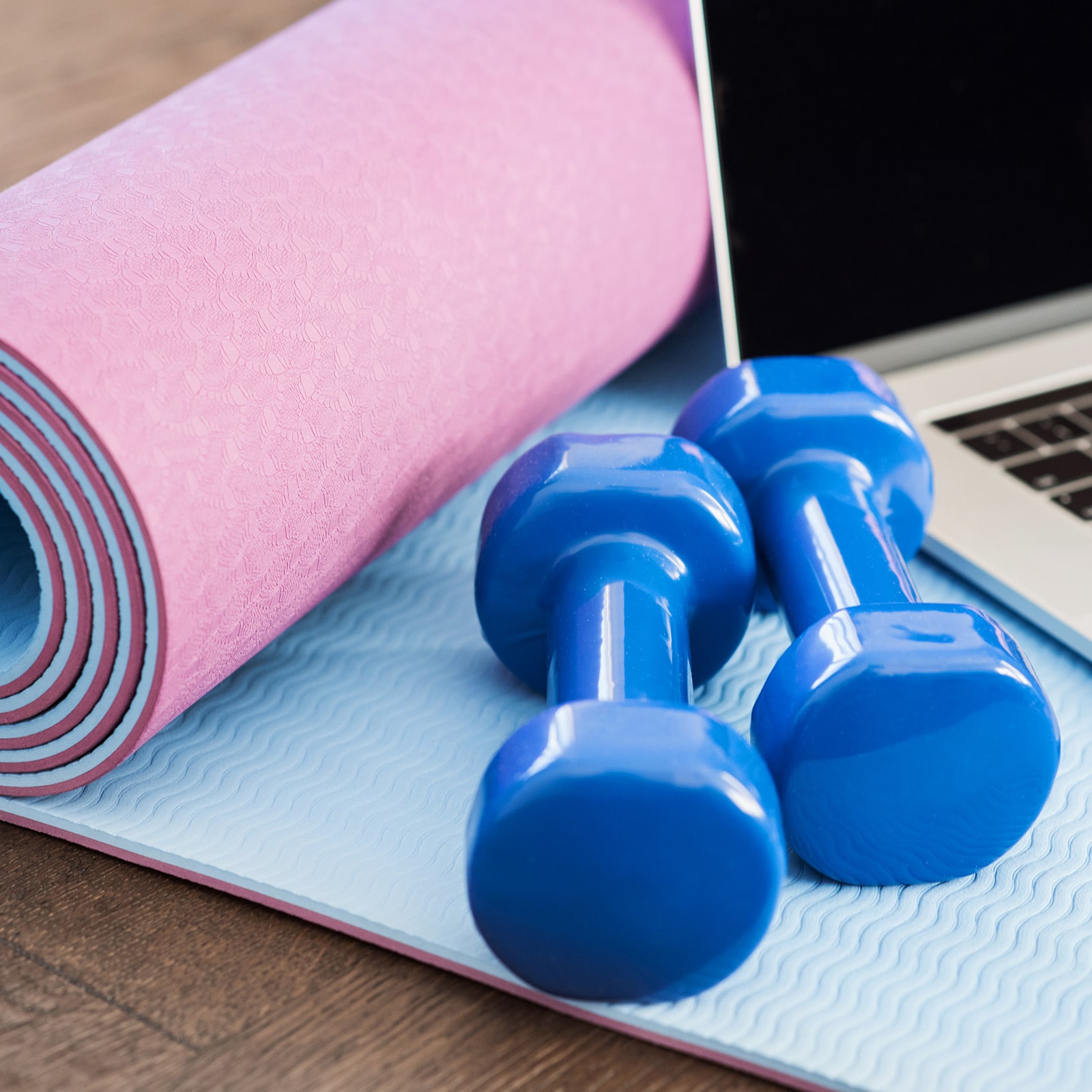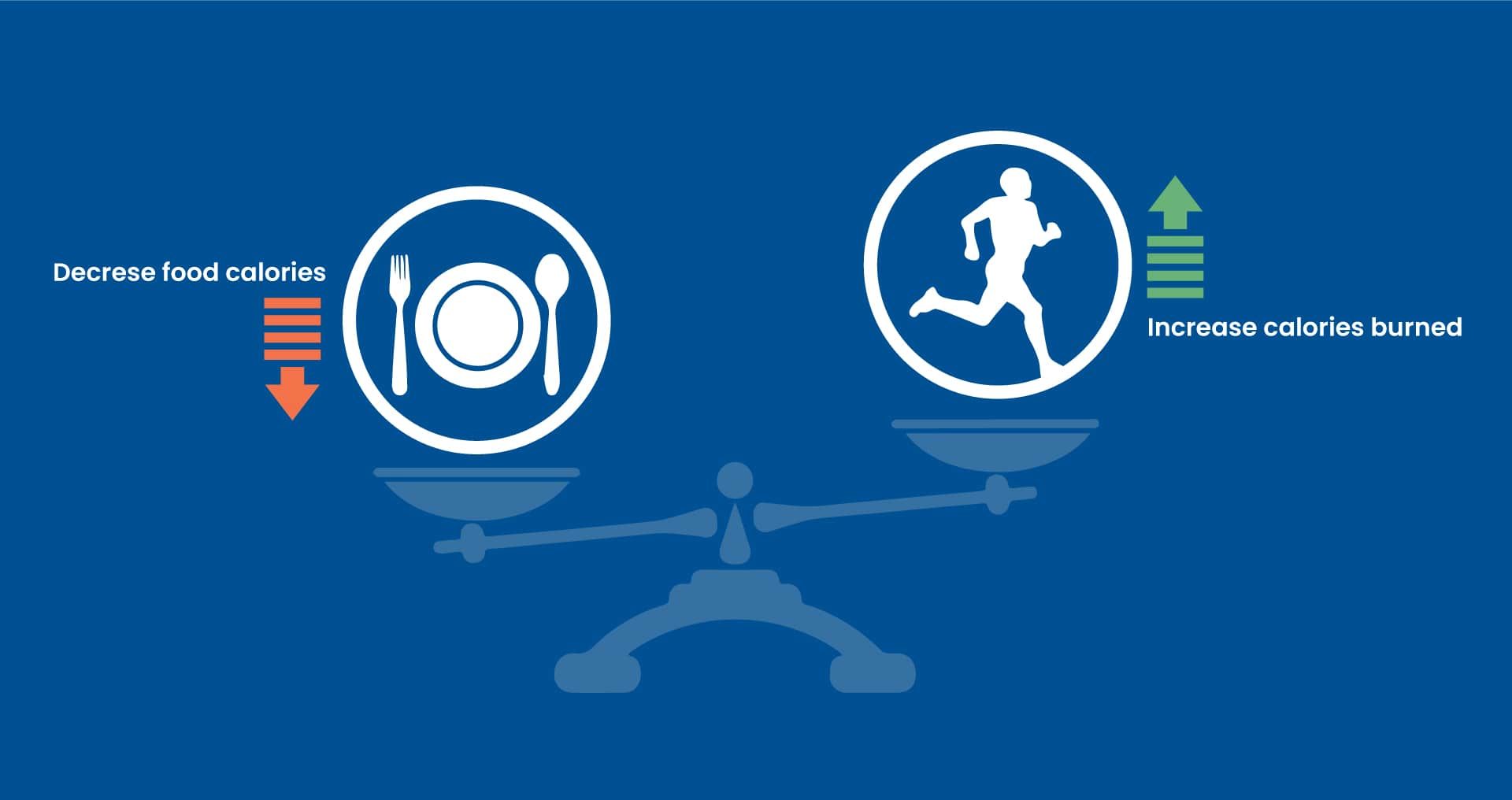
Session 6
Tipping the Calorie Balance

Session 6-4
How to Create a Calorie Deficit

More physical activity increases the number of calories your body uses or “burns off” and tips the scale towards weight loss
In addition, evidence shows the only way to maintain weight loss is to be engaged in regular physical activity.
Type
Intensity
● The “talk test” is a simple way to measure relative intensity.
● Moderate-intensity activity: you can talk but not sing during the activity.
● Vigorous-intensity activity: No more than a few words without having to breathe.
Duration
Frequency
Ways to Burn Calories
The chart below shows an example of approximately how many calories a person who weighs 154 pounds would burn while engaging in different activities.

| Moderate Intensity | Calories Burned in 30 mins | Calories Burned in 1 hour |
|---|---|---|
| Hiking | 185 cals | 370 cals |
| Light gardening/yard work | 165 cals | 330 cals |
| Dancing | 165 cals | 330 cals |
| Golf (walking and carrying clubs) | 165 cals | 330 cals |
| Bicycling (<10 mph) | 145 cals | 290 cals |
| Walking (3.5 mph) | 140 cals | 280 cals |
| Weight training (general light workout) | 110 cals | 220 cals |
| Stretching | 90 cals | 180 cals |
| Vigorous Intensity | Calories Burned in 30 mins | Calories Burned in 1 hour |
|---|---|---|
| Running/jogging (5 mph) | 295 cals | 590 cals |
| Bicycling (>10 mph) | 295 cals | 590 cals |
| Swimming (slow freestyle laps) | 225 cals | 510 cals |
| Aerobics | 240 cals | 480 cals |
| Walking (4.5 mph) | 230 cals | 460 cals |
| Heavy yard work | 220 cals | 440 cals |
| Weight lifting (vigorous effort) | 220 cals | 440 cals |
| Basketball (vigorous) | 220 cals | 440 cals |
Remember that to lose 1lb you need to tip the balance by 500 calories.
Create A Positive Action Plan
1. Keep careful track of the calories I eat each day.
2. Assess how many calories per day I have already reduced since starting the program. If I have not cut 500 calories/day, I will figure out how I am going to achieve that.
For example: If you currently eat 2300 calories and plan to
– cut 300 calories from your intake and
– walk off 200 calories
Then your total calories for the day will be:
2,300 – 300 –200 = 1,800
3. Record my weight
4. Keep track of my physical activity minutes
How to manage your weight without being hungry: https://www.cdc.gov/nccdphp/dnpa/nutrition/pdf/Energy_Density.pdf
Calories burned with activity:
https://www.health.harvard.edu/diet-and-weight-loss/calories-burned-in-30-minutes-of-leisure-and-routine-activities

